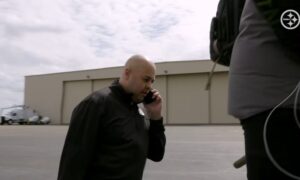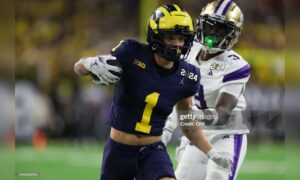As the final cuts came in and teams’ rosters began to take shape, one thing became clear about this Pittsburgh Steelers team: it’s not as ‘local’ as you might expect. That is to say, a lot of the players on the roster were added as veteran free agents who played for other organizations.
A recent study showed that they have among the fewest homegrown players on their roster in the NFL, at just under half—26 of their 53. They were just one of five teams below the 50-percent threshold. But two positions stand out in being responsible for this: the inside linebackers and the secondary.
These two positions were substantially revamped this offseason in outside veteran free agency, so that should be no surprise, but in reality these are two areas at which they have relied on outside help for a while now.
Just one of the four inside linebackers on the 53-man roster was drafted or developed by Pittsburgh, that being the low man on the totem pole, 2022 seventh-round pick Mark Robinson. There wasn’t even another linebacker on the 90-man roster that they drafted or developed after parting with Devin Bush and Marcus Allen from last season.
Consider some of their misses. Bush was an extraordinary whiff, but none of their draft picks at the position have panned out since Ryan Shazier. 2021 fourth-round pick Buddy Johnson was a flop. Ulysees Gilbert III, taken the same year as Bush, did not live up to early promise. Tyler Matakevich was Tyler Matakevich. Allen wasn’t even drafted as a linebacker. Even a rookie college free agent like Matthew Thomas proved a flash in the pan.
They have tried to fill the void with veteran additions, mostly without success, from Jon Bostic and Mark Barron to Joe Schobert and Myles Jack. This year, a trio of very experienced veterans make up the top of the depth chart in Cole Holcomb, Elandon Roberts and Kwon Alexander.
The secondary following Troy Polamalu’s retirement only began to get back on the right track when the front office began taking bold action to make things better through outside additions. It started in earnest with the signing of CB Joe Haden in 2017 and went into high gear after acquiring FS Minkah Fitzpatrick via trade in 2019.
While they have high hopes for rookie second-round CB Joey Porter Jr., he figures to be the only homegrown member of the starting secondary—indeed, just one of two homegrown defensive backs who remain, the other being James Pierre, after parting with Tre Norwood with the final roster cuts.
This is another area full of misses, going back to early-round whiffs from Curtis Brown in the third round in 2011 to 2019 third-round pick Justin Layne, bookending first-round Artie Burns and second-round Senquez Golson. The last development they had here was 2017’s Cameron Sutton, whom they were unable to re-sign in free agency this offseason.
Patrick Peterson and Levi Wallace will make up the starting cornerbacks, the former likely moving into the slot—and if he doesn’t, it will be other free agents, Chandon Sullivan or Desmond King, or possibly even Elijah Riley, who joined the team during the 2022 season.
SS Terrell Edmunds’ spot will be manned by Damontae Kazee and Keanu Neal, two veterans of great experience prior to arriving in Pittsburgh. Even their special teams captain, S Miles Killebrew, had several years in the league before becoming a Steeler.
Granted, seventh-round pick Cory Trice Jr. would have had a great shot at making the team had he not injured his knee, but as it stands, we’re looking at two spots on the roster—inside linebacker and defensive back—where 25 percent of the room or less consists of players drafted or originally signed by the Steelers.
Does that mean anything? Honestly, probably not. No organization spends more time searching for ‘Steelers’ players with whom they have prior connections via free agency and trade than Pittsburgh does, guys they would have drafted if they were in the position to do so. But it’s still notable as an indication of their issues developing talent at these spots in recent years.
At least when it comes to these two positions, I don’t think it has much to do with the transition in the front office from Kevin Colbert as general manager to Omar Khan. It’s just a pre-existing lack of talent that needed to be addressed through outside means, for several years running.








